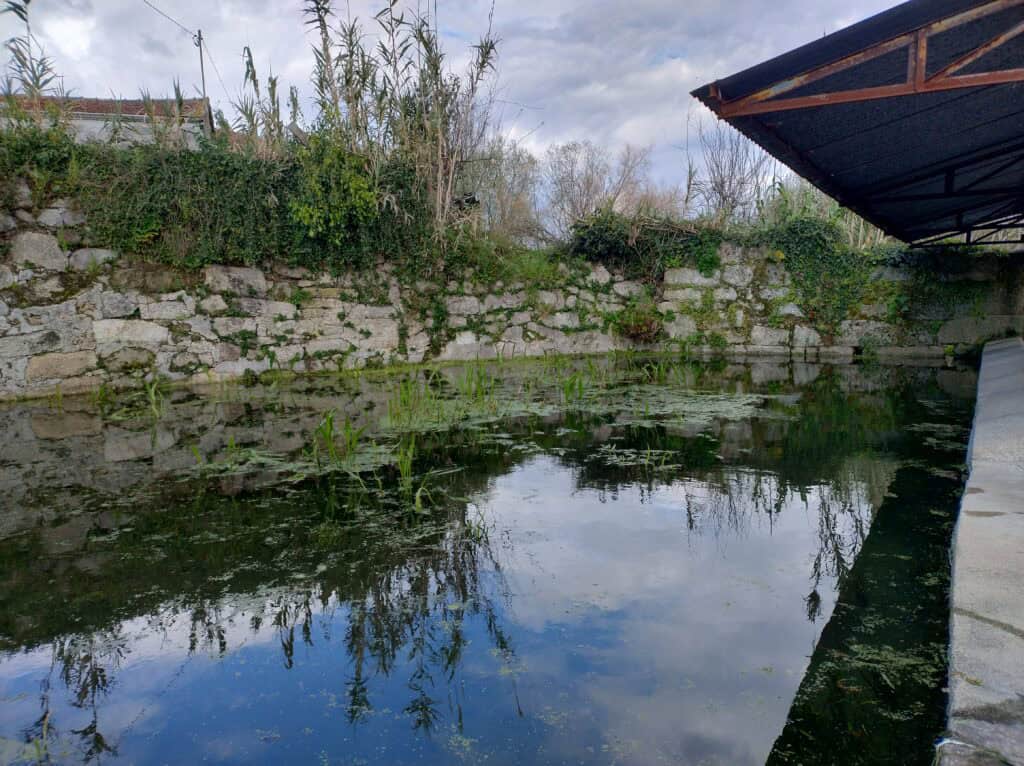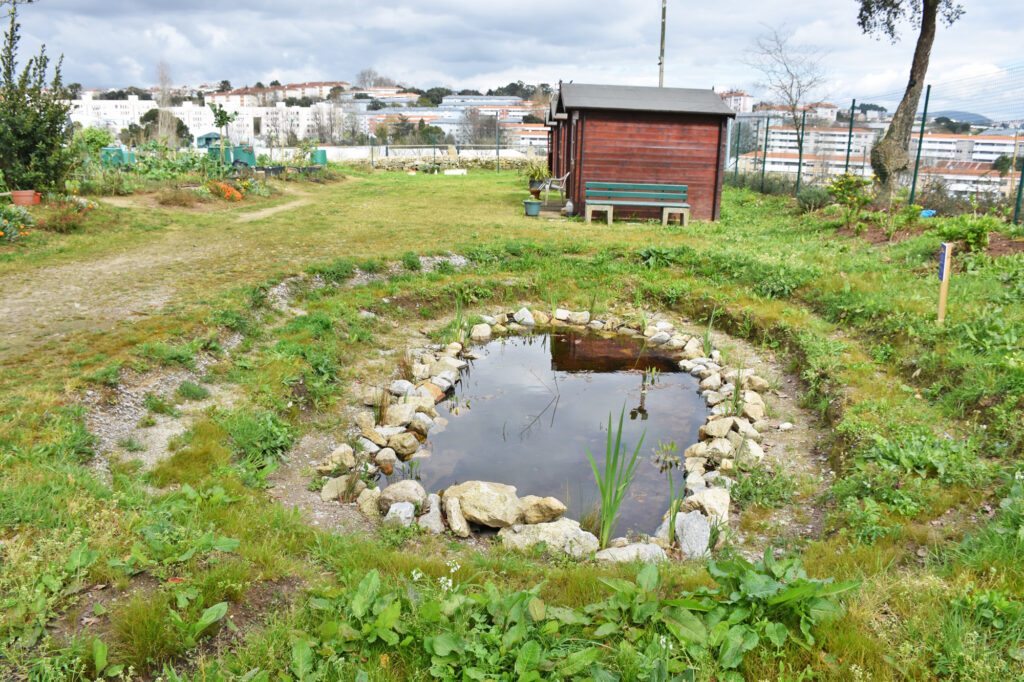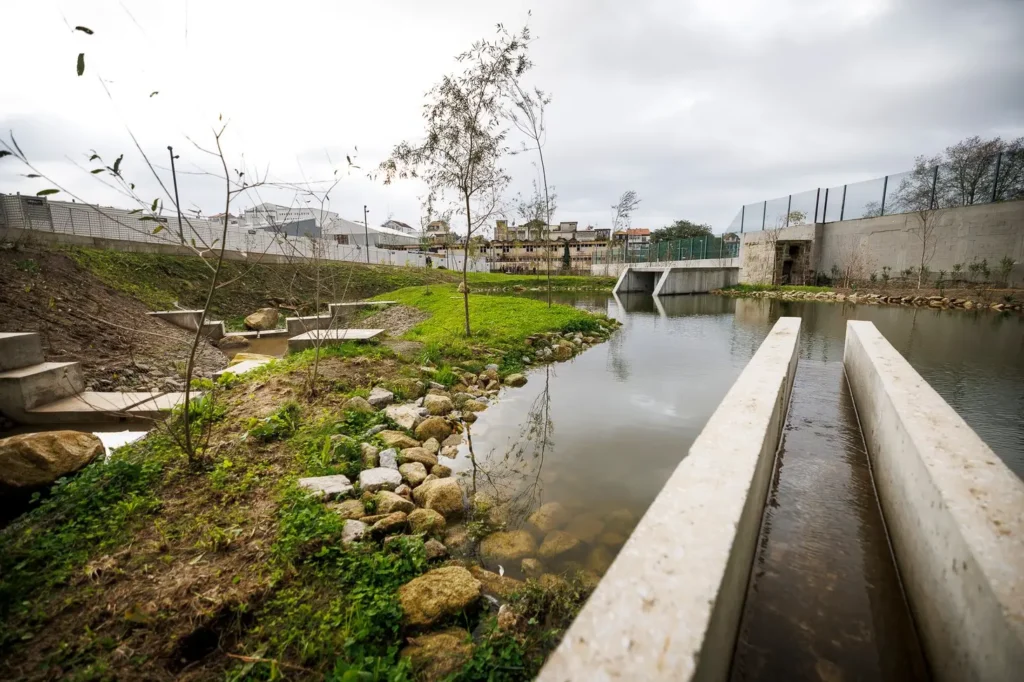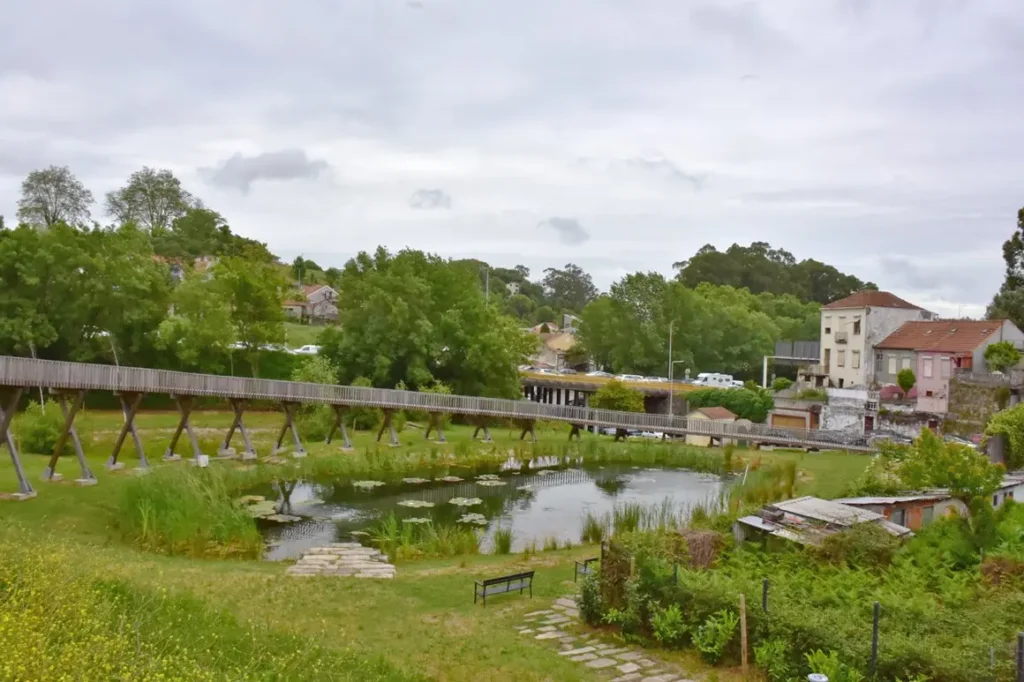The Tanque de Contumil is a body of water with a strong historical and cultural component, a true oasis lost in time. The place where they once washed clothes and soaked cod, now gives way to nature. Once these customs have disappeared, plants and animals have reclaimed the habitat and it has become a fundamental place for the city’s aquatic biodiversity.
The Municipality of Porto, with the support of CIIMAR, removed the invasive plants, installed ramps for the amphibians and reinforced the biodiversity of fauna and flora. This is now a space of diverse botany, enriched with orange-bellied newts (Triturus boscai), Iberian midwife toad larvae (Alytes obstetricans), salamanders (Salamandra salamandra) and green frogs (Pelophylax perezi) and many dragonfly and damselfly larvae, among other invertebrates. As proof of a healthy coexistence between humans and nature, this pond continues to be useful for some small farmers, who water their gardens with its waters while benefiting from the ecosystem services provided by its inhabitants.
The pond was rehabilitated by the Municipality, in partnership with CIIMAR (Interdisciplinary Centre of Marine and Environmental Research). The main objectives of this collaboration are to increase knowledge of the city’s wetlands, mapping, biological inventory and characterisation, with a view to adopting conservation and restoration measures and creating new water bodies.
Address
Campanhã
Location
Campanhã
Promoter
Municipality of Porto
Presentation
Partners
CIIMAR
Ecological functions
Improvement of water quality; Improvement of quality of life; Promotion of biodiversity; Reduction of extreme climatic events; Regulation of air quality; Regulation of temperature; Regulation of floods; Carbon sequestration
Sustainable Development Goals
3 - Good Health and Well-Being; 11 - Sustainable Cities and Communities; 13 - Climate Action; 15 - Life on Land
OTHER SUGGESTIONS
A pond that was built as part of the redevelopment of a school, which is right next door and which, in addition to its teaching function, also serves as a water retention basin for water from the school's roofs, an infiltration point for surplus water in the aquifers and a promoter of biodiversity.
A park with a crucial role to play both in enhancing public space and in the city's renaturation strategy. The retention basin and pond increase local biodiversity and phytodepuration. The aquatic plants introduced help filter pollutants, fix sediments and improve the natural purification of the water.
A large retention basin that filters rainwater, reduces flooding and recharges aquifers. It supports biodiversity with important habitats for amphibians and aquatic plants. It also offers leisure areas, integrating urban functionality and environmental sustainability.



